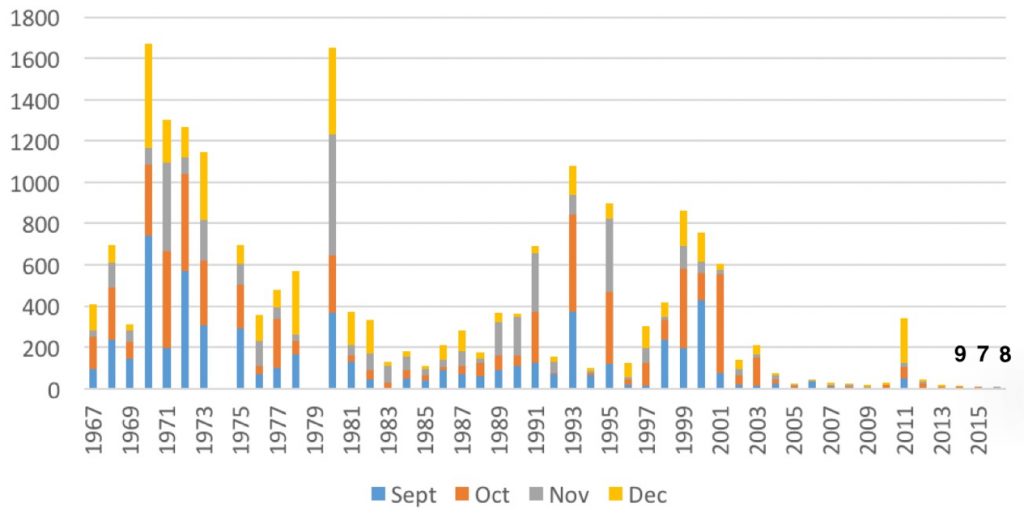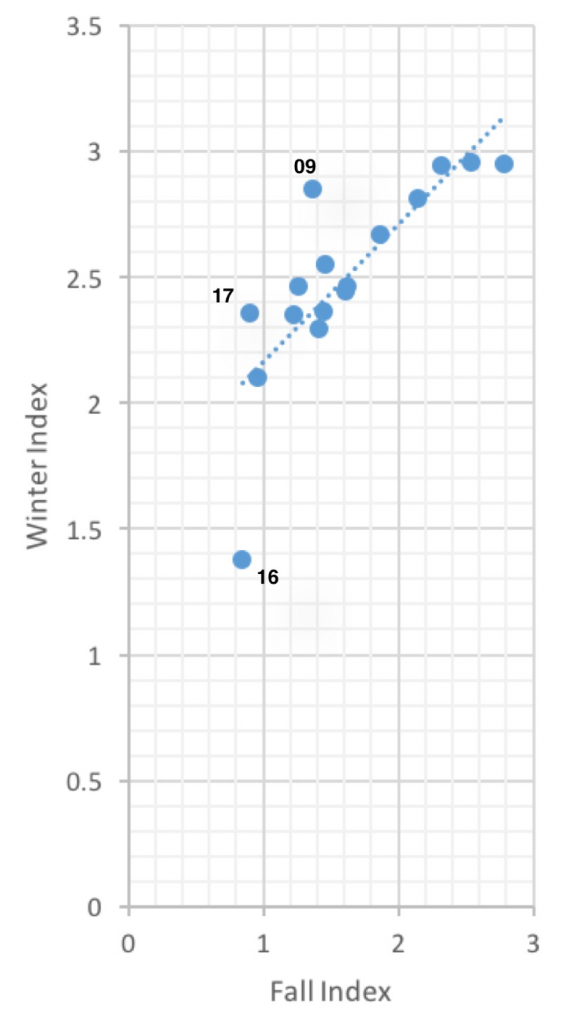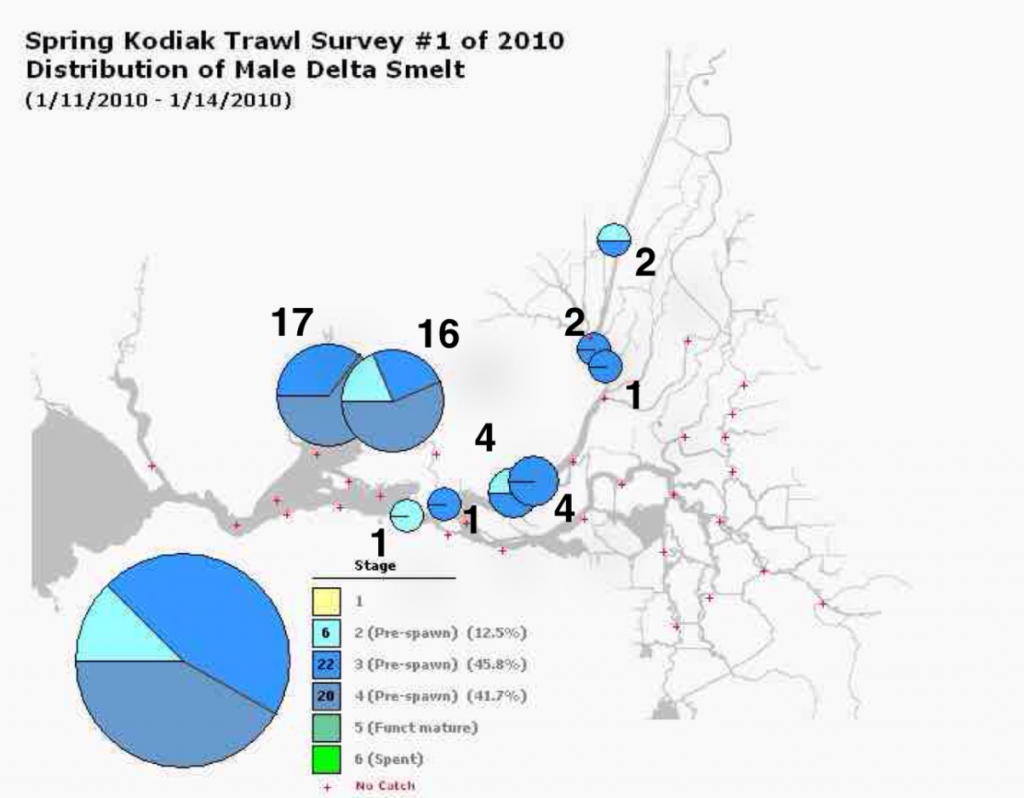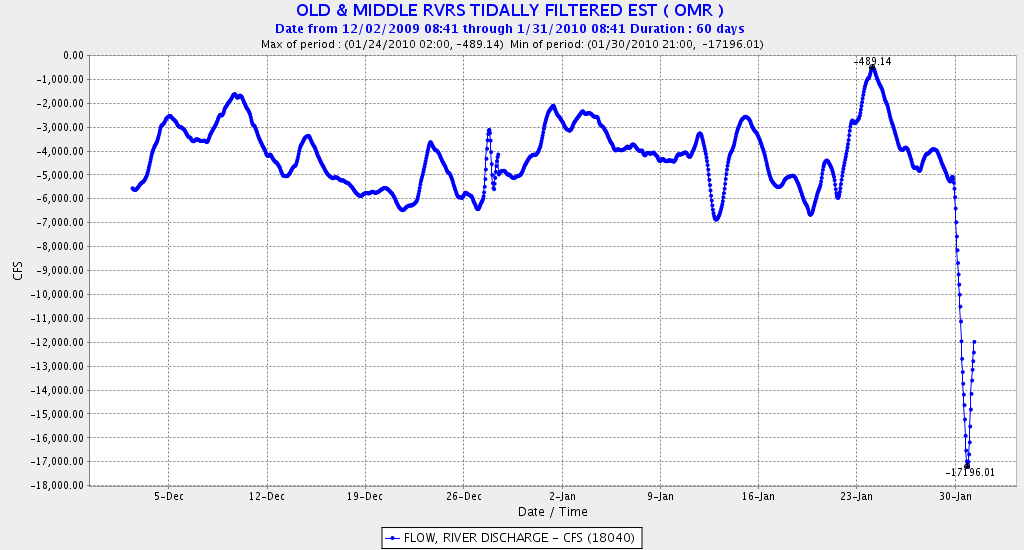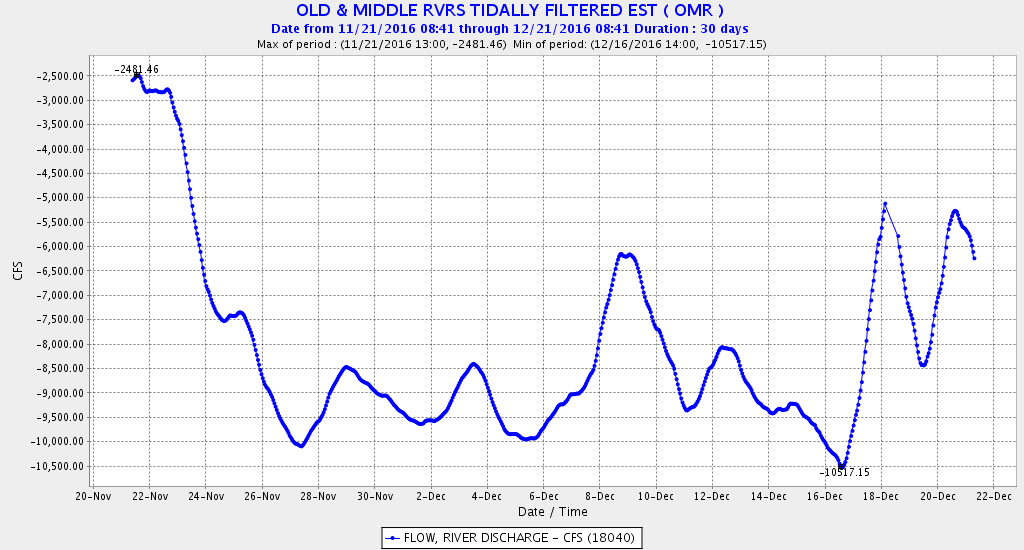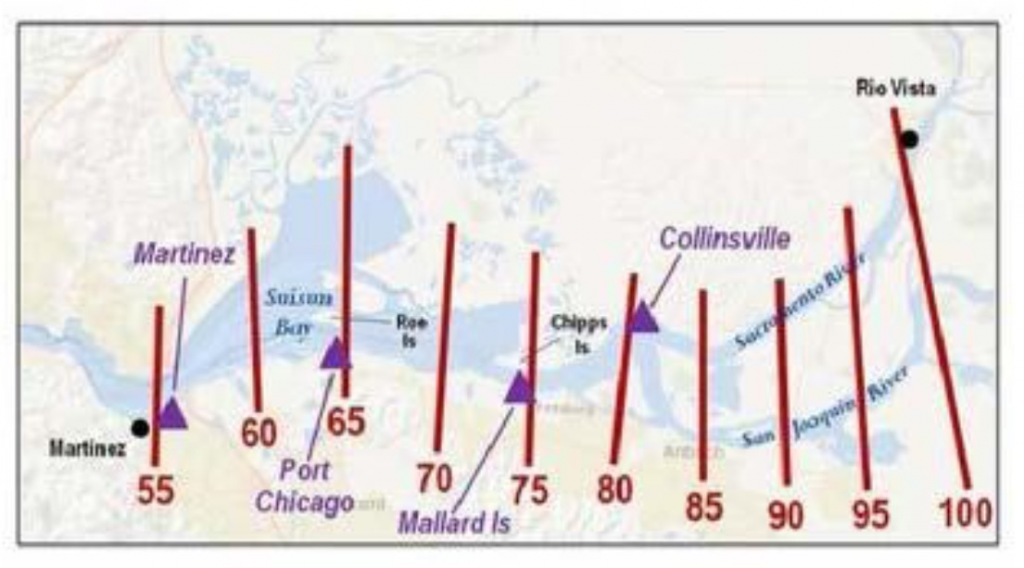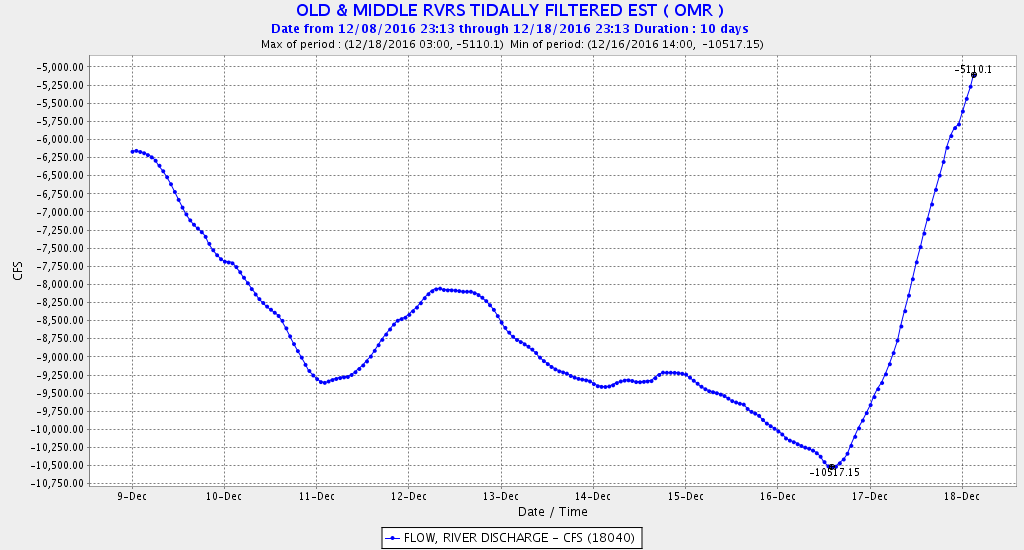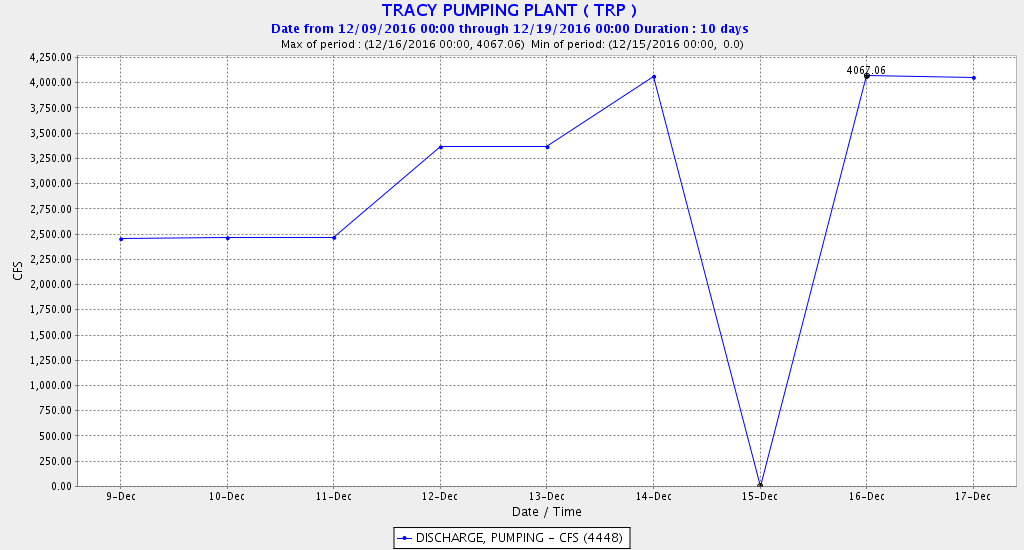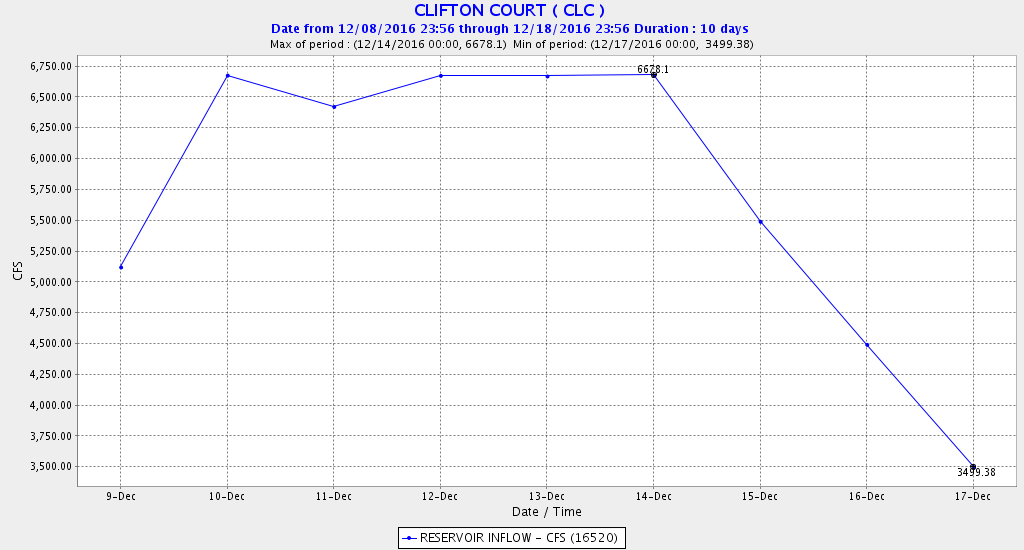The Delta smelt population in the Bay-Delta reached record or near-record low indices in 2016 (Figures 1-3), but ended the year with some promise of recovery (Figure 3). The December 2016 Kodiak Trawl Survey collected 214 Delta smelt in one of its nine trawls, and at least one Delta smelt was captured in each of the other eight trawls. Fall 2016 has been wet following a below normal water year 2016 (October 2015 – September 2016), which followed the 2012-2015 drought.
Some early insight into this apparent resurgence in the 2017 index can be gained by reviewing the relationship between the Fall Midwater Fall Index and the subsequent Winter Kodiak Trawl Index (Figure 4). There is a strong positive stock (previous fall index) to recruitment (winter index) relationship with three apparent outliers (2009, 2016, 2017). The poor fall 2015 and 2016 indices resulted in strongly contrasting winter recruitment (winter 2016 and 2017 indices). This likely reflects the benefits of a wet fall of 2016 to the 2017 index (Dec. 2016 survey), as compared to the dry fall of 2015 and subsequent poor 2016 index.
Water year 2015 was a critically dry year with extremely low flows. In contrast to 2015, critically dry year 2008 with its low fall index produced a strong winter 2009 index. The strong showing in the winter of 2009 may have been due to the extremely low December (2008) and January (2009) exports, combined with relatively high Delta outflow pulses, a pattern that rarely occurs after a critically dry year. We will be keeping a close look at how the apparent resurgence plays out in 2017, especially with new less stringent export restrictions mandated in recent legislation for the implementation of the two federal biological opinions that apply to Delta water project operations.


